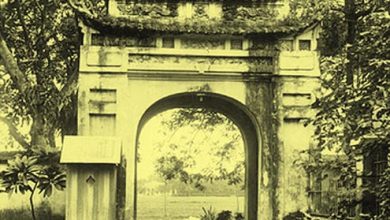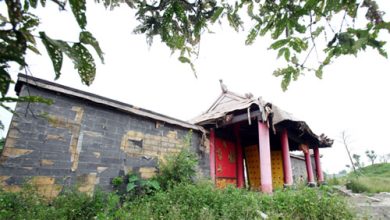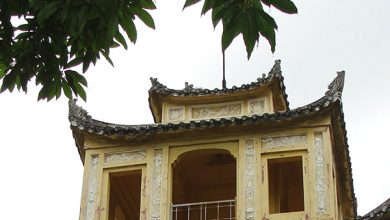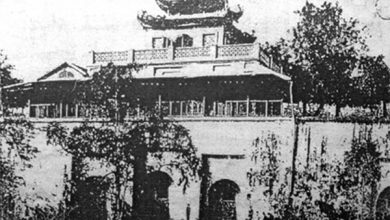Explore cultural journey through… column base pedestal
During the feudal period, stone was a popular type of construction materials due to high durability. At the exhibition area in Hanoi Ancient Citadel, there are still a large number of stone artifacts unearthed within the Imperial Citadel. Each object contains its cultural stories which highly represent for each historical period.
At Hau Lau in 1998, archaeologists conducted archaeological excavations. As a result, thousands of ceramics, building materials and architectural decorations of Ly, Tran, Le Dynasties were found. Particularly, at a depth of 3.2 m, the scientists found column base rock pedestals carved with Ly Dynasty lotus leaves. The precious objects have allowed scientists to judge: archaeological excavation area is situated within the ancient Thang Long Imperial Citadel.
Column base stone pedestal under Ly Dynasty was square. On the surface, in the middle, there was a circle which was the position for supporting the pole. Around the central circle, there was a layer of lotus petals. Therefore, overall, the column base pedental under Ly Dynasty looked like a lotus, embracing the pole. Lotus was a symbol of Buddhism. Under Ly Dynasty, Buddhism was considered to be the state religion. That was the period when monks had a very high position in society who were respected and able to participate in politics. Therefore, the image of lotus and lotus petals appeared a lot in constructions and was decorated on many utensils under Ly Dynasty.
Entering Tran Dynasty, Buddhism was still in vogue, though Confucianism started to develop. Therefore, the image of lotus, lotus calyx and lotus petal were still widely used. Column base stone pedestal under Tran Dynasty excavated at Hau Lau also confirmed that. However, unlike the column base under Ly Dynasty, the column base under Tran Dynasty, the lotus image was not decorated on the surface of the column but around the base. This decor made column base pedestal more prominent like a lotus calyx. Another difference between the column base stone pedestals under Ly and Tran Dynasties located in the body of the base. The body of column base pedestal had three tiers and the lotus calyx. According to the feudal concept, three tiers were very often used because they corresponded to the sun – the land and people or people – mandarins and king. Meanwhile, the body of the column base stone pedestal under Ly Dynasty was lower and did not have tiered, simply consisted of two parts: the base and the pedestal.
Entering Le Dynasty, Confucianism gradually occupied the No. 1 position; Buddhism was not a unique religion. Therefore, the image of lotus calyx and petal were not widely used anymore. Hence, the column base pedestals under Le Dynasty also did not have decorative image of lotus. It was merely a square stone, engraved with a circle on the surface to support the column base.
Column base stone pedestal is just one of the many items and materials used in the ancient feudal dynasty. Being a stone pedestal, but it contains all the layers and levels of distinctive culture for each period. Furthermore, with ornaments or other important items, the cultural significance is probably much deeper.






